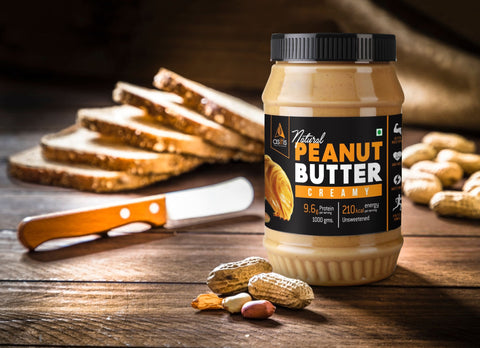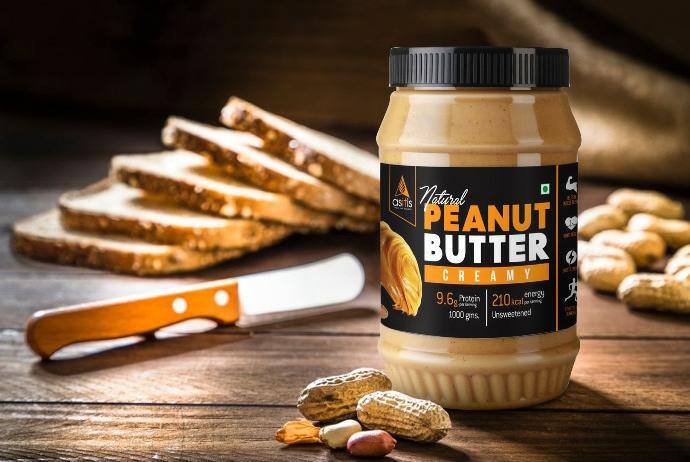December 2, 2019
Madhura Mohan
How To Store Peanut Butter – To Refrigerate Or Not?

The most trendy, and popular way to eat peanuts, undoubtedly is in the form of Peanut butter. The dreamy, creamy, wonder spread is the star of kitchen cabinet in most houses worldwide. The relatively inexpensive plant-based protein is known for its incredible nutritional value, texture, taste, shelf life and storage options.
Well, the topic today is not about the nutritive value or the benefits of peanut butter. I guess you have already got sufficient info about it from our blog Peanut Butter – A Great Nutritional Package.
Here I am today, going to be discussing the serious question concerning the storage options of peanut butter. There are many conventions about its storage that people swear by. Some argue storing it in the fridge, while others think it’s not necessary to refrigerate, it can be simply stored in the pantry. If you ask me, I would say it’s not about arguing, it’s about understanding things better.
I have got to give you some valuable information before moving ahead.
Peanut Butter Isn’t The Same As Peanut Spread

How many of you bother to check the label while buying your peanut butter. Do you simply go pick a jar on seeing the peanut butter image on the label? Don’t do this mistake the next time!
As per the FDA (Food & Drug Administration), a product needs to have a minimum of 90% peanuts to be labelled Peanut butter. Peanut spreads contain only 60% of peanuts. While the peanut butter contains wholesome peanuts with a good amount of healthy fats, the spreads contain additives like sugar, emulsifiers and unhealthy hydrogenated oils. Peanut spread is the reduced-fat peanut butter.
Natural peanut butter contains peanuts in their purest form. It is made by blending roasted peanuts into semisolid consistency. It is unrefined and in most cases, unsalted. Peanut butter is healthier than peanut spreads.
Natural Peanut Butter Vs Peanut Butter Spread
NATURAL PEANUT BUTTER
|
PEANUT BUTTER SPREAD
|
Contains peanuts (sometimes salt) as the only ingredient
|
Contains other ingredients like sugar, salt, hydrogenated oils along with peanuts
|
Unrefined/ Unprocessed
|
Refined/Processed
|
Contains heart-healthy mono & polyunsaturated fats/ trans-fat-free
|
Is higher in saturated fat/ may contain trans-fat
|
Doesn’t contain preservatives or emulsifiers
|
Contains added preservatives and emulsifiers
|
Smooth & creamy texture
|
Smooth & extra creamy texture
|
Accredited to oil separation
|
Little or no oil separation
|
Tastes natural
|
Tastes flavoursome due to added sweeteners
|
Not very shelf-stable
|
Has a longer shelf life
|
In order to produce an extremely shelf-stable product, manufacturers add hydrogenated oil to the regular peanut butter. This hydrogenated oil which is a source of unhealthy trans-fat keeps the peanut butter smooth and mixed together.
Natural peanut butter like that of AS-IT-IS will have 100% peanuts as mentioned on the label and is the healthiest one.
Now comes our main topic of discussion, fridge or outside?
Decide Where To Store Your Natural Peanut Butter Yourself…
Now, I don’t think you’d want to know how to store processed peanut butter? Hope you know what to buy?
Here is a simple and straight forward suggestion for storing natural peanut butter. Look for the storage instruction on the jar. If it says, store at room temperature, away from direct sunlight, simply do what it says.
If the label on the pack suggests to refrigerate, do it.
I am talking about storing the opened bottle of natural peanut butter.
Now, the question is what if the label does not suggest anything regarding the storage and what if your mind says to experiment but you are not sure what to do? Hmm…that’s something that will bother you for sure!
Here is a guide which helps you to decide how to store peanut butter…
Whether you decide to store peanut butter in the pantry or in the fridge, the first thing you should remember is that the jar of peanut butter should always be closed with its lid when not in use.
Storing At Room Temperature
As explained earlier, the oils separate from the solids in natural peanut butter, a process known in the technical term as ‘syneresis’.
Natural peanut butter is shelf-stable for a period of up to 9 months and doesn’t go bad if not refrigerated.
It can be stored in a relatively cool, dry place like the pantry.
Storing It Upside Down In Pantry
This may sound strange! Yet, it is a valuable tip for people who may not like to stir the oil that floats on top of natural peanut butter every single time they want to consume it. Storing the bottle upside down will allow even distribution of oil throughout the jar, instead of just floating on top.
Storing the peanut butter outside will keep its texture smooth so that it is easy to spread it.
Storing It In The Fridge

Let me give you some knowledge of science at this point. Since natural peanut butter undergoes oil separation, when it is exposed to air for a long time, the oxygen may degrade the fat’s structure (a process called rancidification) which could change the flavour and smell of the product. You don’t have to take it otherwise. Oxygen will not make peanut butter go bad; it just alters its taste a bit.
Refrigerating your peanut butter will make it hard (oil gets solidified), firmer, helps preserve the flavour for longer. One downside of refrigerating peanut butter is that it doesn’t spread easily.
Peanut butter is a versatile food, perfect as a spread on your bread, sandwiches, desserts, smoothies, just eating it straight from the jar…Next time, you shop for peanut butter, do check if the label says ‘Natural’...
You have got the knowledge; it’s up to you to decide where you would like to store your peanut butter…
Just asking you out of curiosity, where would you store your jar of peanut butter?
 Follow our Instagram page for the latest updates: badalkhudko
Follow our Instagram page for the latest updates: badalkhudko


 Follow our Instagram page for the latest updates: badalkhudko
Follow our Instagram page for the latest updates: badalkhudko









Comments
Leave a comment